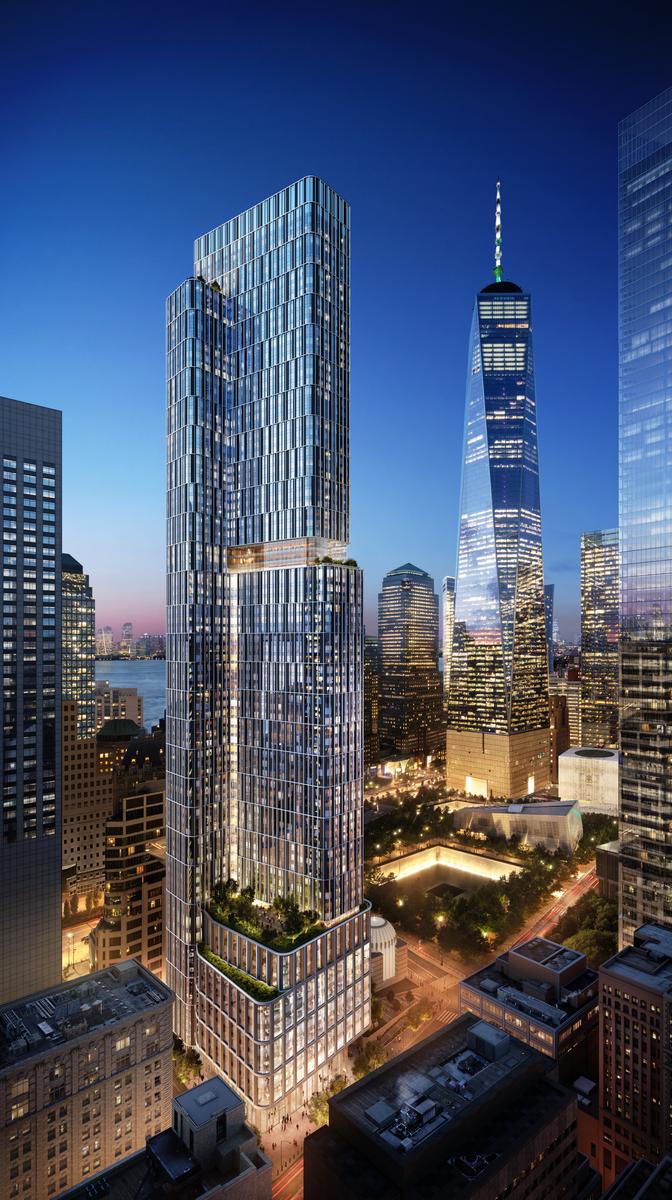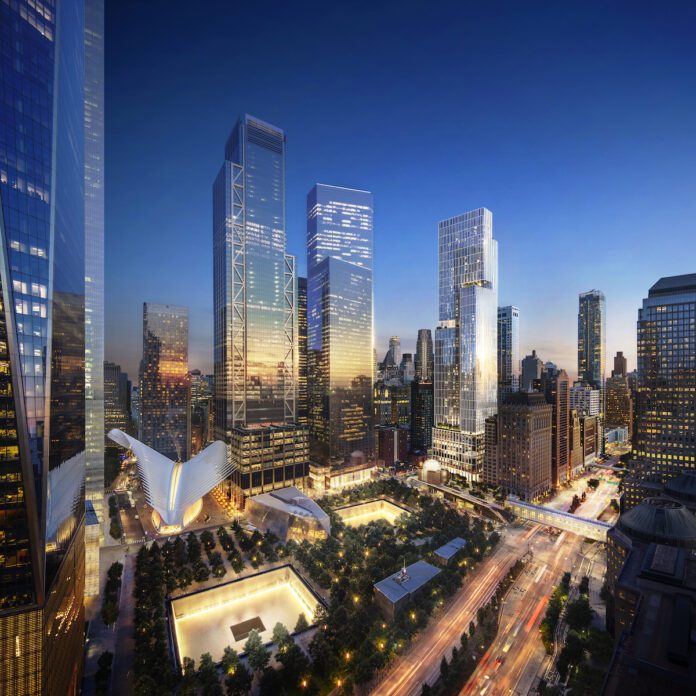In February 2021 the Port Authority of New York and New Jersey and the Lower Manhattan Development Corporation (LMDC) reached an agreement for development of 5 World Trade Center, the final piece of the new World Trade Center Complex.
The plan for 5 WTC calls for development of a 900-foot tall residential tower by both Brookfield and Silverstein Properties at 130 Liberty Street, the site of the Deutsche Bank Building, which was damaged in the attacks on September 11, 2001 and torn down in 2011. The tower, the first and only residential development within the World Trade Center Complex, will offer 1,325 apartments; 25% of those units will be set aside as permanent affordable housing. The building will also hold significant office space, community space, and retail.
Lower Manhattan has changed significantly since 2001. The residential population has doubled, from 33,000 to 64,000, and the number of housing units has risen from 14,588 to 33,714. But the area has added just 300 units of affordable housing since 2014, bringing the total to around 1200 apartments.
In September 2021, the average market-rate rent in the Financial District and Battery Park City was $5,061, and the rental vacancy rate was just 1.64%. However, the neighborhood has a glut of unsold luxury condos: over 1300 vacant units in the district, and more currently under construction. There are concerns that the COVID-19 pandemic, which has made living near the office less important, may exacerbate the problem.

While the 300+ units of affordable housing represent a significant increase, the plan has raised questions. For long-time neighborhood residents, many of whom survived 9/11 and experienced health effects as a result, the plan doesn’t include enough affordable housing. They have formed The Coalition for an Affordable W.T.C. Tower 5 to lobby for the building to be 100% affordable housing, arguing that, “Long-time moderate and middle income residents are being forced from their homes. Their children, who survived and grew up in the aftermath of the terrorist attack and helped rebuild Lower Manhattan, cannot afford to live in the area. Much of the new luxury housing is not even succeeding. Many towers are unfilled or unfinished, including 125 Greenwich Street across the street from 5 World Trade Center, which entered foreclosure.
A fully-affordable building could be economically difficult to achieve, given that the cost of developing and maintaining affordable units is higher than the revenue they bring in. Additionally, in a mixed market and affordable building, the rent from the market rate apartments effectively subsidizes the affordable units. The issue is heightened in the case of 5 WTC, as both the building’s height and location push the price tag higher. Each unit will cost approximately 1 million dollars to develop which causes some affordable housing advocates to look at the expense of the apartments and see public funds that could build far more than 300 units in places within the city where the development cost would be lower.
Finally, the proposed affordable units are meant for families and individuals in the “low income” bracket, those who earn 31-50% of an area’s median income. The income threshold for those apartments is 50% of the area median income, $53,700 for a family of three (see chart here for additional specifics) and who should be paying around $1,250 in monthly rent costs based on a rent affordability calculator. The nation, and New York City, are in greatest need of units affordable to those in the “very low income” and “extremely low income” ranges, as demonstrated by a report from Comptroller Scott Stringer.
Much remains unknown about 5 WTC, which isn’t slated to break ground until at least 2023. Controversy around the current plan raises questions that New Yorkers have long grappled with: how do you create sustainable communities in a city of change? What is the responsibility to the public when public funds are used? What does the city owe to those who survived 9/11, stayed in the neighborhood, and helped make Lower Manhattan the vibrant neighborhood it is today? In a city of 9 million, there are many opinions, but no easy answers.
Leah Reddy is a New York-based writer, video editor, teaching artist, and theatre director/dramaturg with roots on the westside of Cincinnati, Ohio. She’s been lucky enough to teach in all five boroughs of NYC and as a result, spend time in our fantastic city’s lesser-known neighborhoods. An avid runner, foodie, and NYC history buff, she will talk your ear off about her favorite subjects and try to convert you to her level of enthusiasm for the Yiddish Broadway walk of fame, thali, and the fact that Chester Arthur was sworn in as President of the United States in the building that now houses Kalustyan’s. She wants all New Yorkers to be able to enjoy their city and to marvel in the things that surround us all each day.



